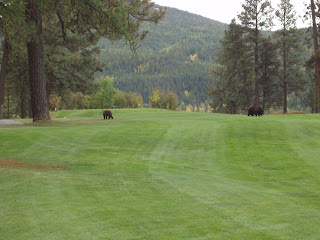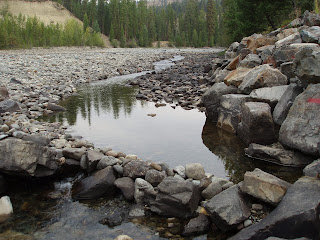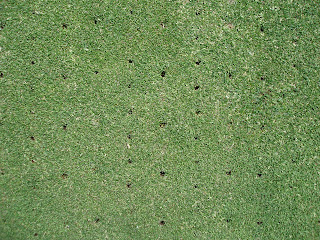Fall projects are the usual equipment tear down and reel grinding for the mechanic. Brad built a few more of the garbage enclosures that will be used on select holes to accent the brick work we will continue doing around the ball washers.
 | |
| Garbage Enclosure |
1. Two packages wood panelling: $16/can
2. Wire mesh: $6.50/can
3. A quarter of a 5/8's plywood for lid: $8
4. Recycled 2x6 from the clubhouse deck for the base: $0
5. Recycled 2x10 from old shop: $0
6. Staples for air gun, glue, misc. : $5/can
7. Stain: portion of 2 cans @$50? maybe $10
Total materials is around $45/enclosure. We are getting a little thin on the recycled lumber but the amounts we use are minimal and having to add the extra lumber would only increase the cost by another $10 or so. Labour? Building and staining 5 of them took just under 60 man hours. They are not a necessity but I think they add something.
Hopefully, you had time to answer the survey I posted a link to in the last post. Go to Kimberley Bulletin Article to read the article that was appeared in Friday's paper. Unofficial grapevine has things will remain status quo but we'll have to wait. I was pleased to hear from a number of people who took the time to fill out the survey. Again, hopefully, we will get a better representation of what people across the province really want.
Unless things get strange on the course my posts for the next month will be sparse but will start up more frequently in February when all the "Snowbirds" may be starting to think about comin' home.

















































